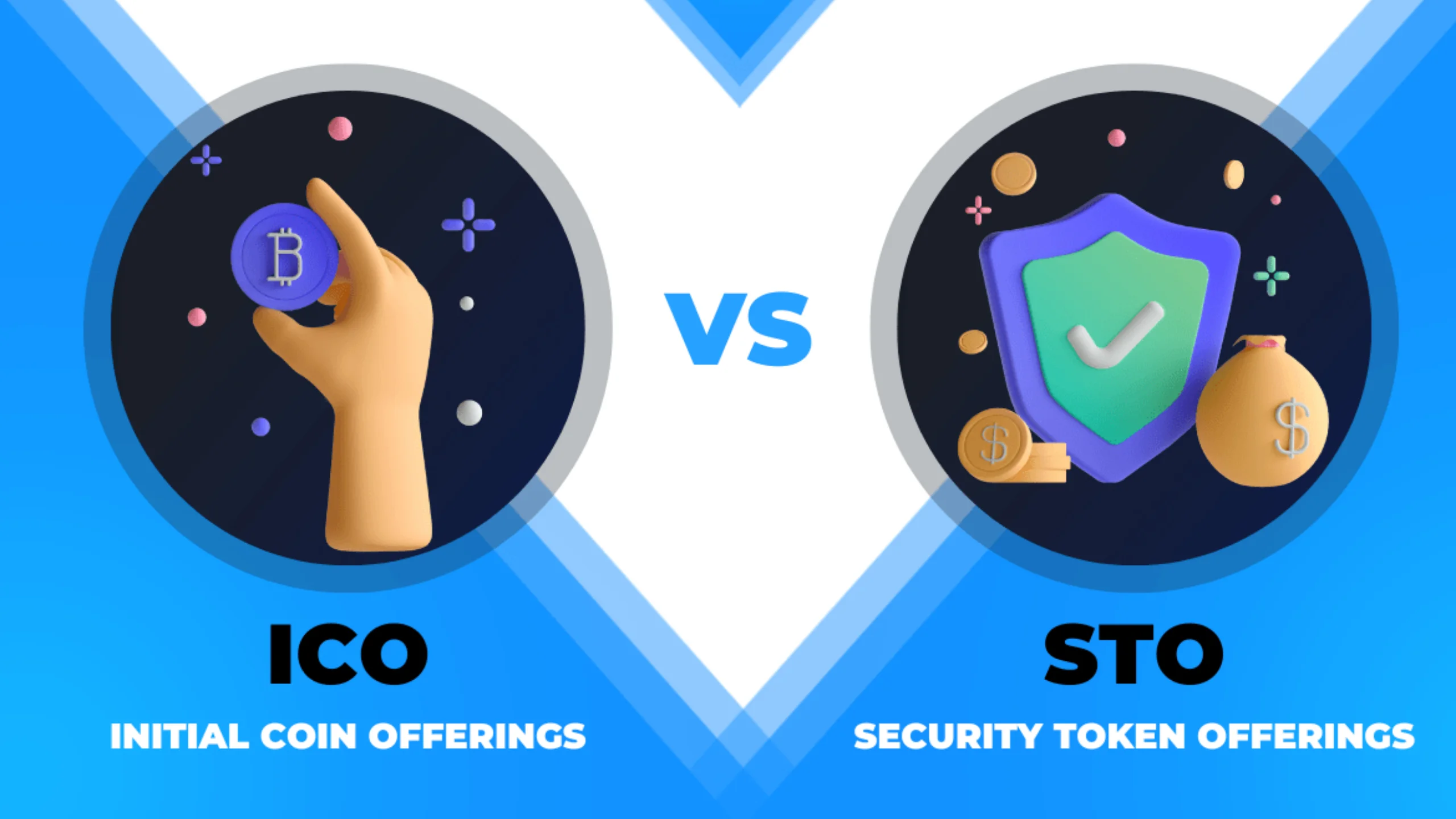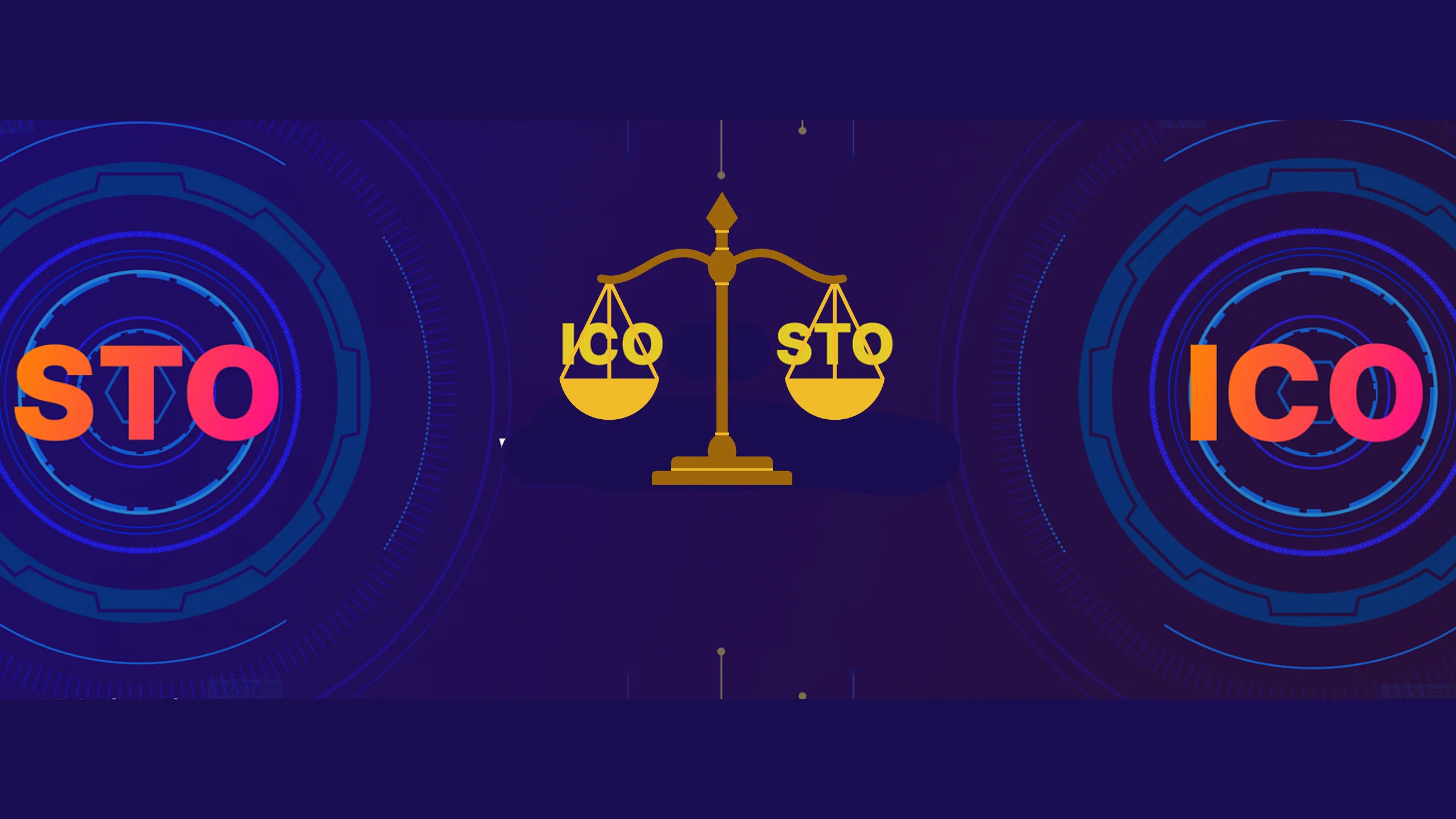What is the difference between ICO and STO?
ICOs vs. STOs: A Comparative Analysis
Introduction
Aspect | Initial Coin Offerings (ICOs) | Security Token Offerings (STOs) |
Regulatory Compliance | Generally less regulated | Subject to securities regulations |
Investor Protections | Limited investor protections | Enhanced investor protections |
Asset Backing | Tokens often represent future utility within project | Tokens represent ownership or fractional ownership of real-world assets |
Investor Rights | Limited or no rights for token holders | Rights to dividends, voting, or asset appreciation |
Legal Status | Often viewed as utility tokens | Recognized as securities by regulatory authorities |
Market Accessibility | Open to a broad range of investors | Restricted to accredited or institutional investors |
Liquidity | Tokens may lack liquidity on secondary markets | Enhanced liquidity due to regulatory compliance |
Difference between ICO and STOs

1. Regulatory Compliance
A. Initial Coin Offerings (ICOs)
- The regulatory landscape for ICOs is continually evolving, with regulatory authorities worldwide issuing guidance, enforcement actions, and policy updates to address emerging risks and challenges associated with token sales.
- Despite efforts to regulate ICOs, regulatory uncertainty persists in many jurisdictions, leading to inconsistencies, ambiguity, and legal challenges for ICO issuers and investors.
B. Security Token Offerings (STOs)
- STOs are subject to a comprehensive regulatory framework governing securities issuance and trading, providing investors with legal protections, market transparency, and regulatory oversight.
- Compliance with securities regulations is a key consideration for STO issuers, who must navigate complex legal requirements, registration processes, and compliance obligations to ensure regulatory compliance and market integrity.
2. Investor Protections
A. Initial Coin Offerings (ICOs)
- ICO investors face significant risks, including project failure, fraud, hacking, and regulatory enforcement actions, due to the lack of investor protections and regulatory oversight in the ICO market.
- The absence of standardized disclosure requirements, investor accreditation, and regulatory enforcement mechanisms leaves ICO investors vulnerable to exploitation and financial loss.
B. Security Token Offerings (STOs)
- STOs offer enhanced investor protections, including disclosure requirements, investor accreditation, and regulatory oversight, to mitigate risks and safeguard investor interests.
- Compliance with securities regulations imposes legal and compliance obligations on STO issuers, who must provide investors with comprehensive disclosure, transparency, and accountability to foster investor confidence and market trust.

3. Asset Backing
A. Initial Coin Offerings (ICOs)
- ICO tokens derive their value from speculation, demand, and adoption within the issuing project’s ecosystem, rather than tangible asset backing or intrinsic value.
- The value proposition of ICO tokens is often based on future utility, network effects, and market sentiment, rather than underlying assets or collateral.
B. Security Token Offerings (STOs)
- STO tokens are backed by tangible assets, such as equities, debt, real estate, or commodities, providing investors with intrinsic value, asset security, and risk diversification.
- The asset-backed nature of STO tokens enhances investor confidence, market stability, and risk management, as investors have recourse to underlying assets in the event of default, insolvency, or liquidation.
4. Investor Rights
A. Initial Coin Offerings (ICOs)
- ICO investors typically have limited or no rights beyond the utility provided by the tokens within the issuing project’s ecosystem, such as access to products, services, or governance rights.
- The lack of investor rights in ICOs can lead to asymmetric power dynamics, governance disputes, and conflicts of interest between project teams and token holders.
B. Security Token Offerings (STOs)
- STO investors are granted rights to dividends, voting, or asset appreciation, in accordance with securities regulations, providing them with financial returns, governance rights, and value participation.
- The regulatory framework governing STOs imposes legal and compliance requirements on issuers, who must uphold investor rights, transparency, and accountability to foster investor confidence and market trust.

A. Initial Coin Offerings (ICOs)
- ICO tokens are often classified as utility tokens, representing access to products, services, or functionalities within the issuing project’s ecosystem, rather than securities or investment contracts.
- The legal classification of ICO tokens varies by jurisdiction, with regulatory authorities applying different criteria, tests, and interpretations to determine their regulatory status and compliance obligations.
B. Security Token Offerings (STOs)
- STO tokens are recognized as securities by regulatory authorities, subject to securities laws and regulations governing issuance, trading, and investor protection.
- Compliance with securities regulations imposes legal and compliance obligations on STO issuers, who must register, disclose, and comply with regulatory requirements to ensure regulatory compliance and market integrity.
5. Legal Status

6. Market Accessibility
A. Initial Coin Offerings (ICOs)
- ICOs are open to a broad range of investors, including retail and institutional participants, with minimal barriers to entry, enabling widespread participation and democratizing access to capital.
- The accessibility of ICOs has fueled the rapid growth of the ICO market, attracting diverse investors from around the world and fostering innovation and entrepreneurship in the blockchain industry.
B. Security Token Offerings (STOs)
- STOs are typically restricted to accredited or institutional investors, as mandated by securities regulations, to protect retail investors from high-risk investments and speculative activities.
- The restriction on investor eligibility aims to ensure compliance with securities laws and regulations, enhance investor protections, and promote market integrity and stability in the STO market.
7. Liquidity
A. Initial Coin Offerings (ICOs)
- Liquidity can be a challenge for ICO tokens, as they may lack trading volume and market depth on secondary exchanges, leading to price volatility and liquidity constraints.
- The lack of regulatory oversight and market maturity in the ICO market can contribute to inefficiencies and uncertainties in token trading and liquidity, hindering investor participation and market development.
B. Security Token Offerings (STOs)
- STOs often enjoy enhanced liquidity due to regulatory compliance, investor confidence, and broader market acceptance, providing investors with greater liquidity and price stability.
- Compliance with securities regulations imposes legal and compliance requirements on STO issuers, which can enhance investor confidence, market transparency, and liquidity in secondary trading venues.

Conclusion
In the ever-evolving landscape of blockchain fundraising, ICOs and STOs stand as two distinct yet powerful vehicles for capital generation. While ICOs have historically dominated the market with their accessibility and flexibility, STOs offer enhanced investor protections and regulatory compliance, making them an attractive option for institutional investors and projects seeking legitimacy in the eyes of regulators.
According to data from CoinDesk, ICOs raised over $7.8 billion in 2018, showcasing their immense popularity among blockchain projects and investors alike. However, the regulatory uncertainty surrounding ICOs has led to increased scrutiny from authorities, resulting in a decline in fundraising activity in recent years.
On the other hand, STOs are gaining traction as a regulated and compliant alternative to ICOs. According to research from Security Token Group, the STO market saw significant growth in 2020, with over $500 million raised across various projects. This trend is expected to continue as more issuers and investors embrace the transparency, security, and legitimacy offered by security tokens.
In conclusion, while ICOs and STOs each have their strengths and weaknesses, the rise of regulatory-compliant fundraising models like STOs signals a maturation of the blockchain industry. As investors and projects navigate this evolving landscape, it’s essential to weigh the benefits and risks of each fundraising model carefully. Whether you’re launching a blockchain project or investing in digital assets, understanding the differences between ICOs and STOs is crucial for making informed decisions and driving sustainable growth in the decentralized economy.
Contact Us
Let's Talk About Your Project
- Free Consultation
- 24/7 Experts Support
- On-Time Delivery
- sales@sdlccorp.com
- +1(510-630-6507)















